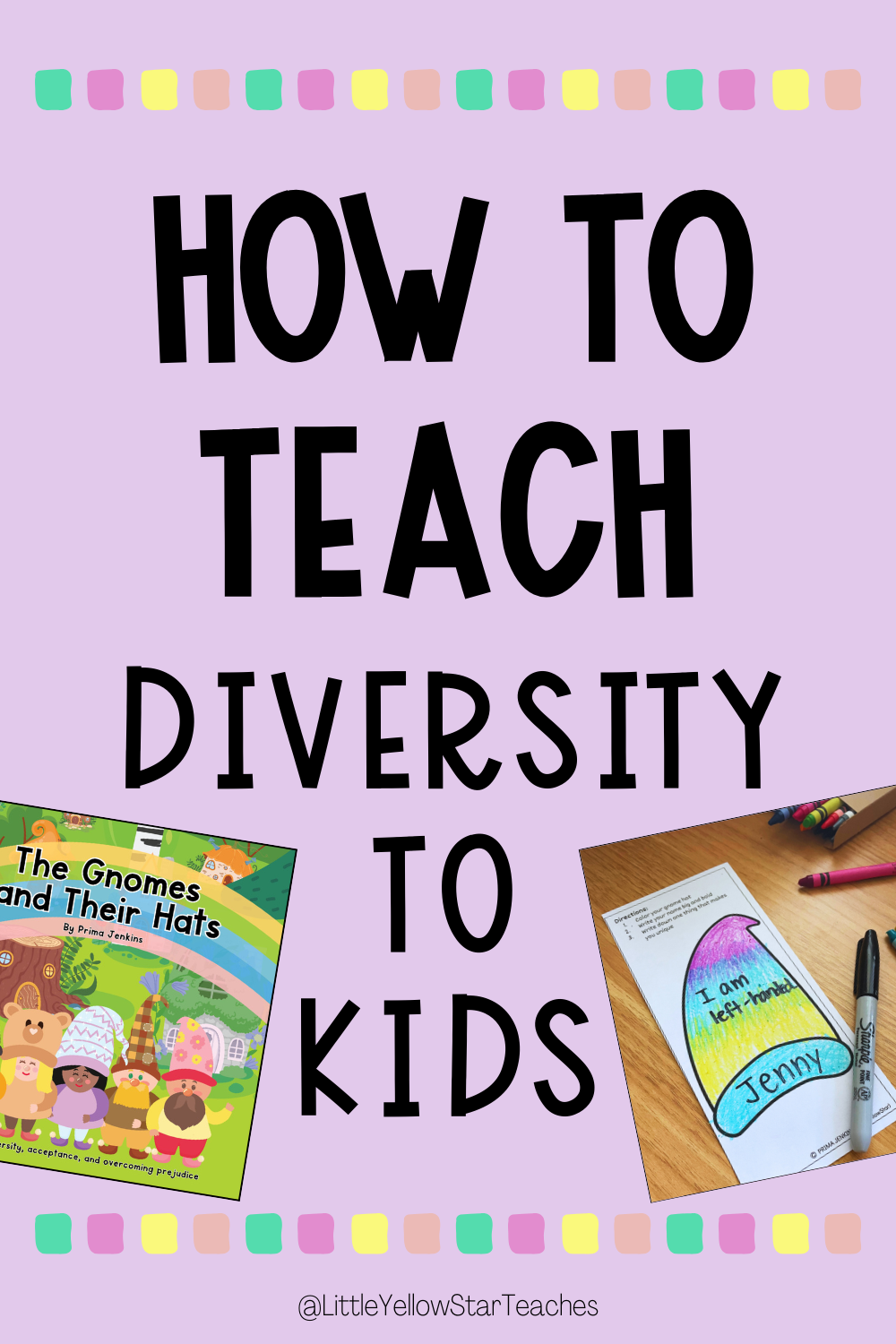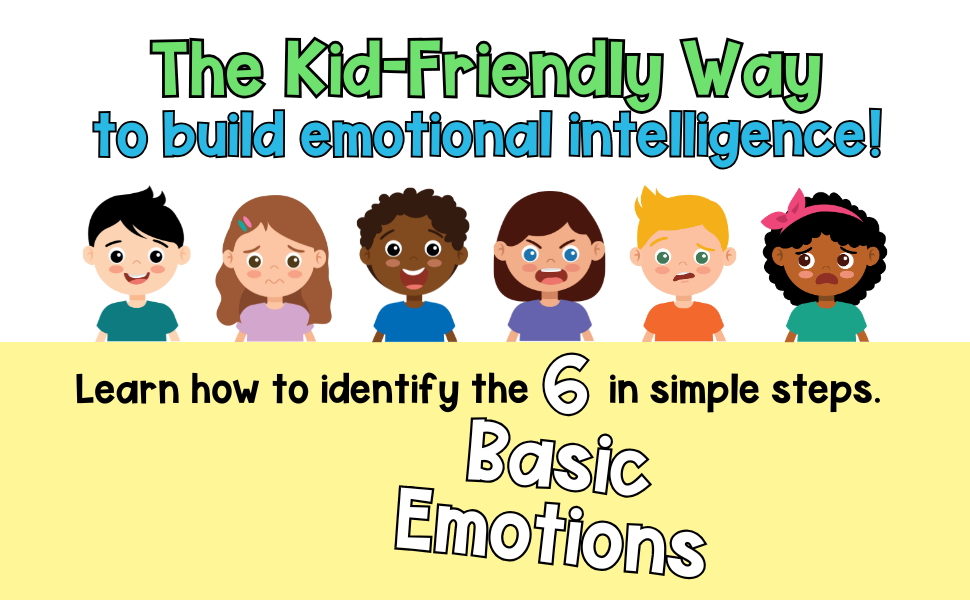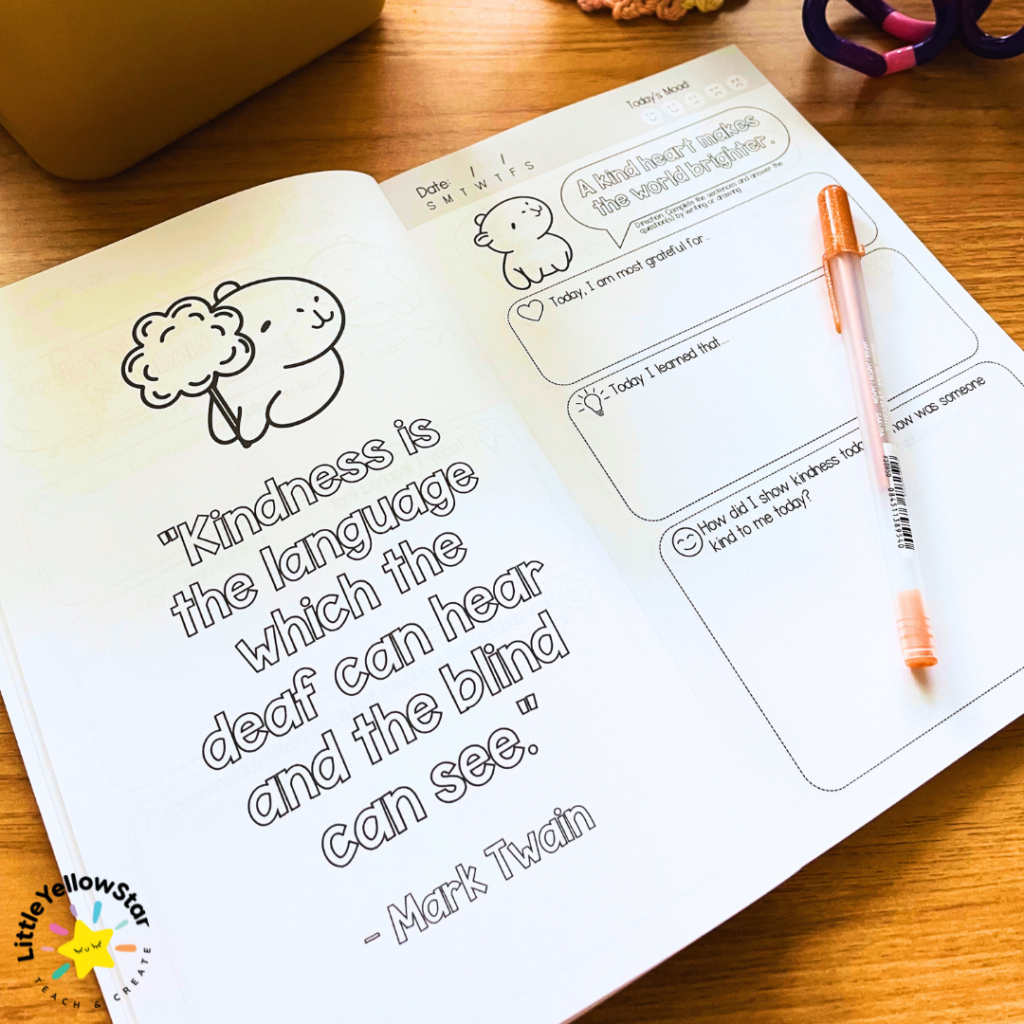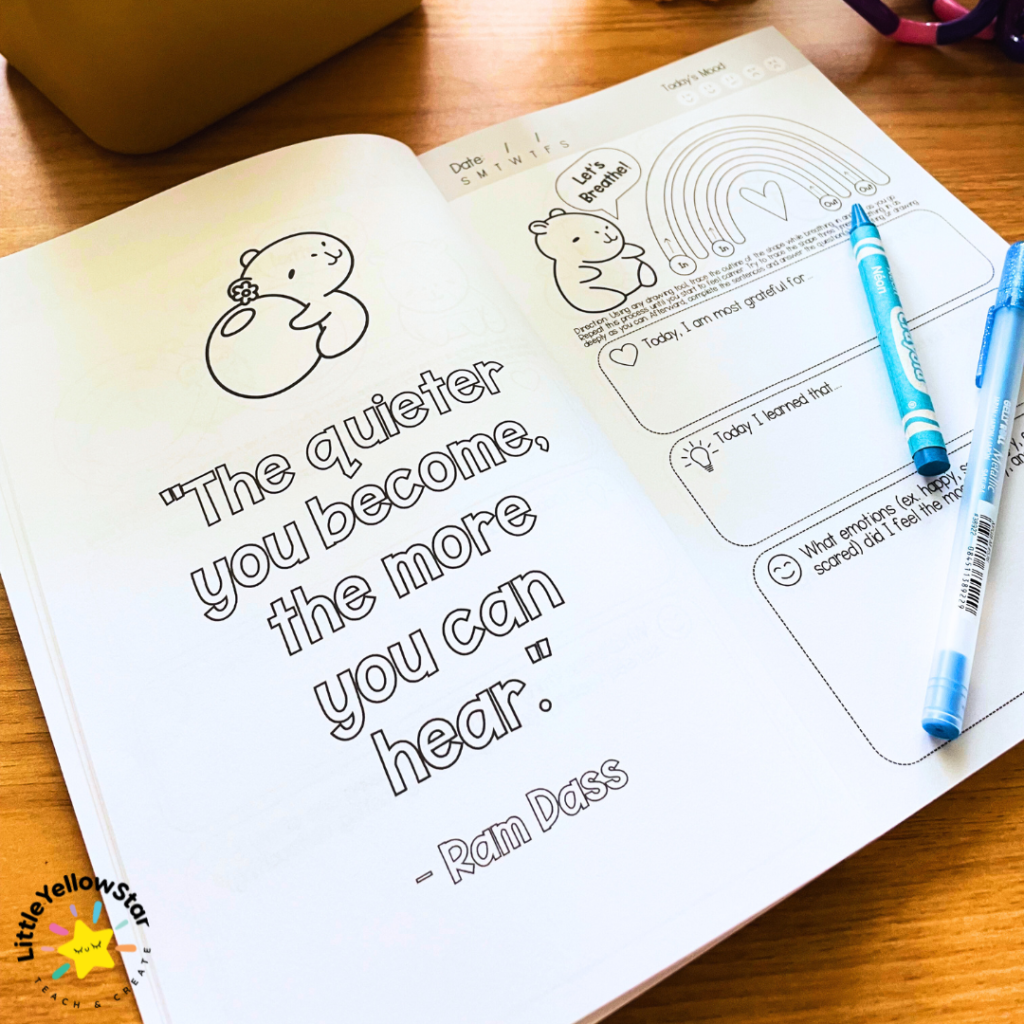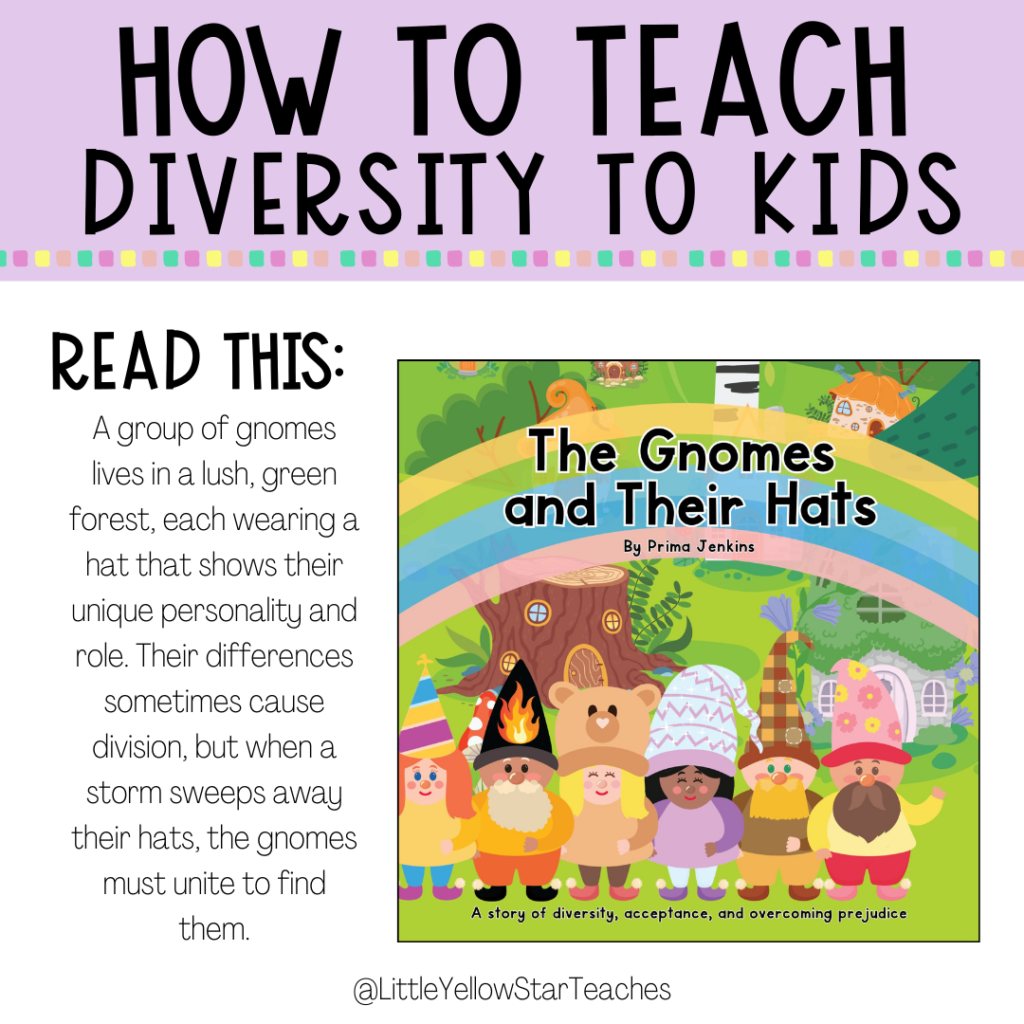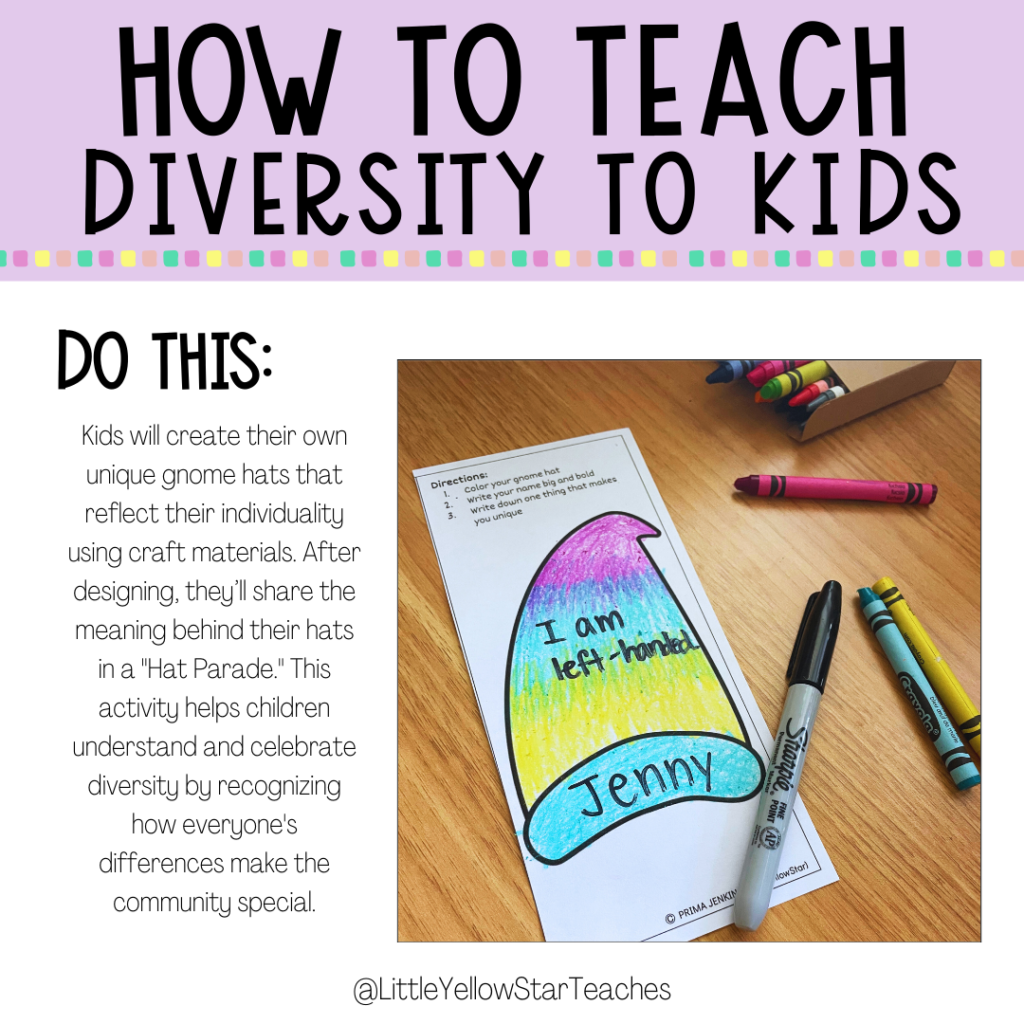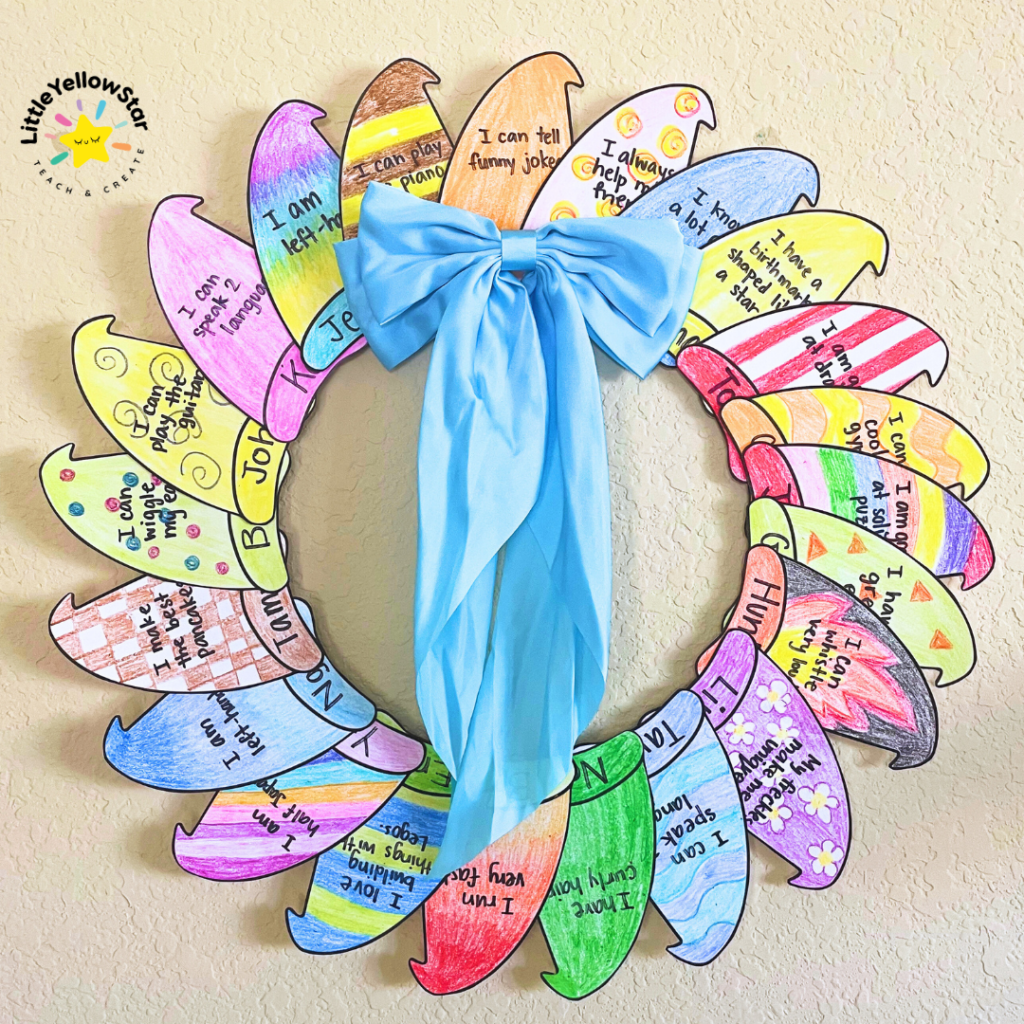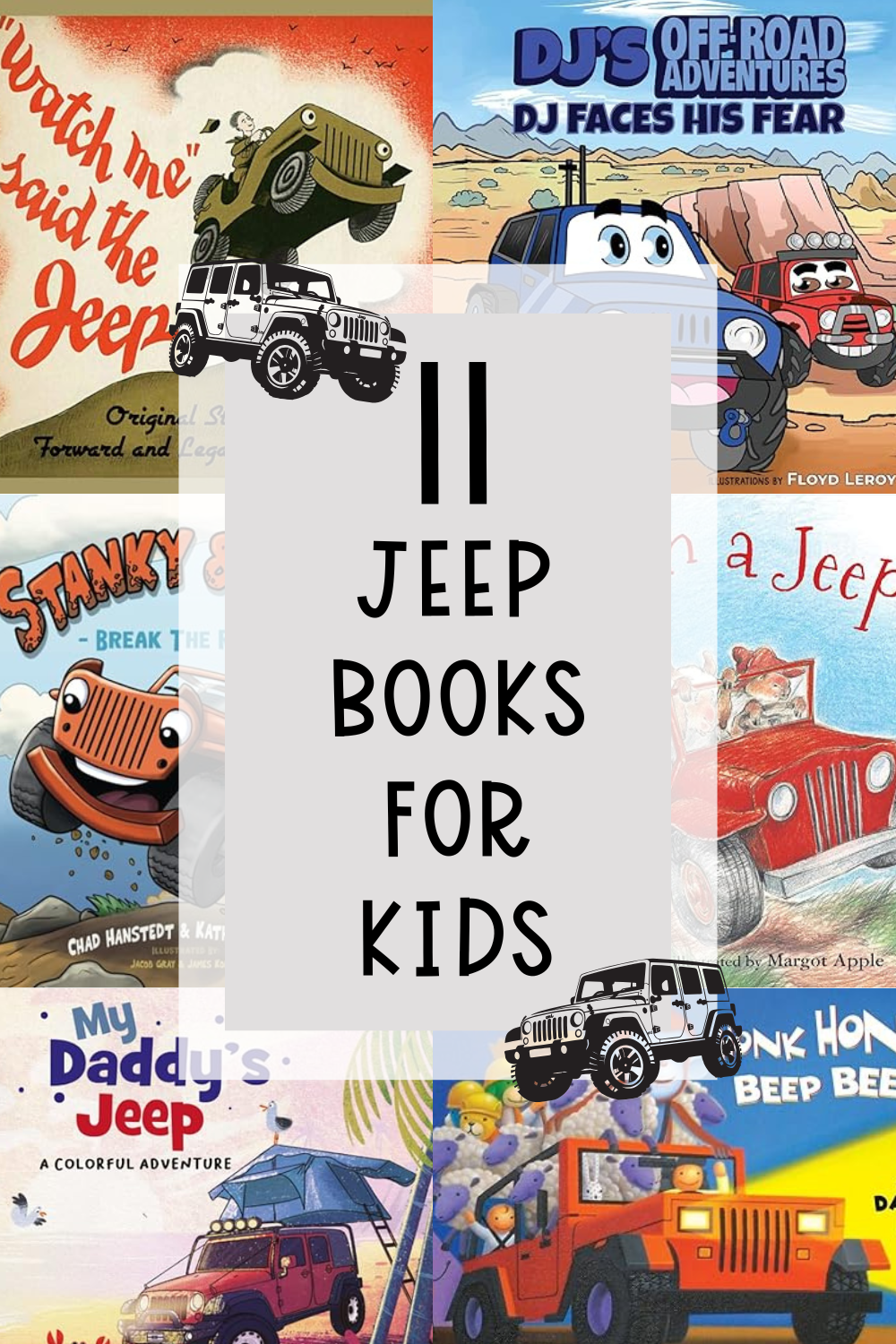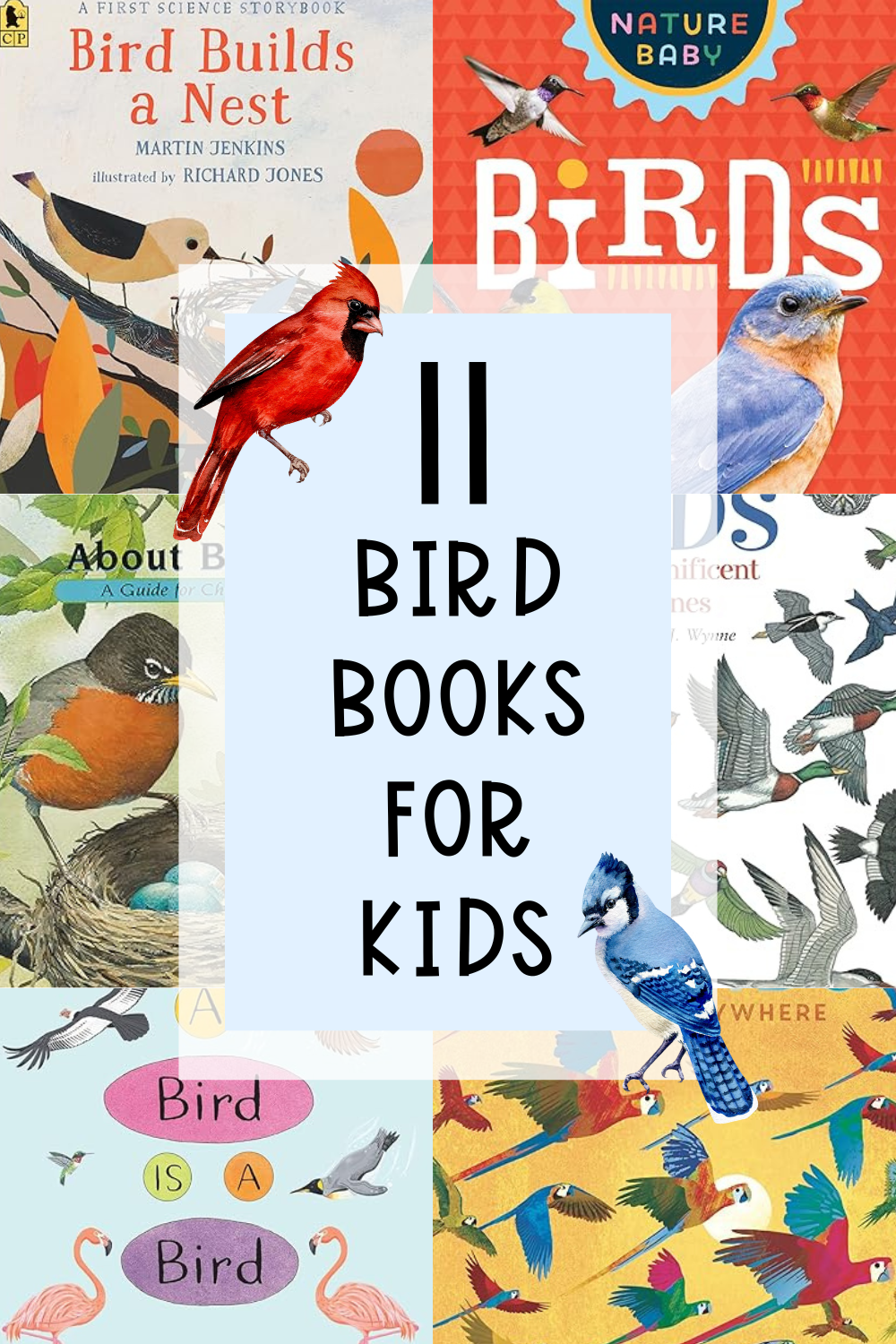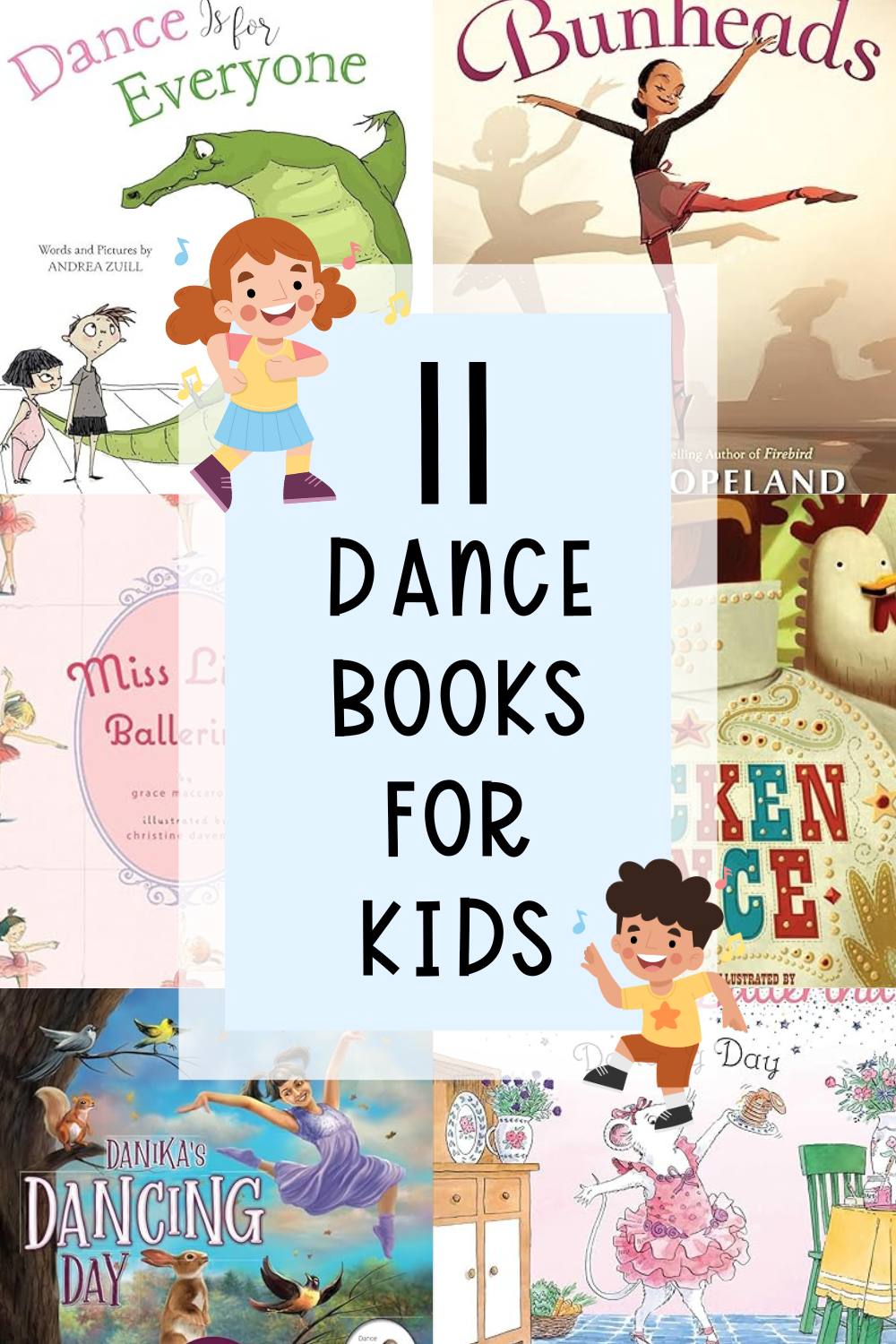***Disclosure: This post contains an Amazon affiliate link that at no additional cost to you, I may earn a small commission when you purchase through the link from my blog. Thank you for your support!
Have you ever wondered why every person you meet is different in their own special way? Some people have curly hair, others have straight hair; some speak English, others speak Spanish, French, or another language. Some celebrate Christmas, while others celebrate Hanukkah, Diwali, or Eid. All these differences make our world a rich and wonderful place to live. This is what we call diversity!
But what exactly does diversity mean, why is teaching diversity to kids important, and how to do it? Let’s dive in and explore!
Table of Contents
- Why Is Teaching Kids About Diversity Important?
- Teaching Diversity to Kids: Say, Read and Do This!
- Celebrate Diversity Every Day!
Grab these free resources to make your teaching life easier!
Why Is Teaching Kids About Diversity Important?
Kids should learn about diversity because it helps them grow up to be understanding, compassionate, and open-minded adults. Learning about diversity from a young age helps kids respect and appreciate differences, work well with others, and stand up against unfairness. It’s about creating a world where everyone is treated with kindness and respect, no matter who they are or where they come from.
Why is Diversity Important?
Diversity is important for a lot of reasons:
- Learning from Each Other:
When we meet people who are different from us, we learn new things! Maybe a friend who speaks a different language can teach us some new words, or a friend who practices a different religion can share their holiday traditions with us. Learning from others makes our lives richer and more exciting. - Building Empathy and Kindness:
Understanding diversity helps us put ourselves in someone else’s shoes. When we learn about other people’s experiences, we start to see the world from their point of view. This helps us become more empathetic and kinder to everyone around us, which makes our schools, neighborhoods, and communities better places for everyone. - Creating a Welcoming Environment:
When we celebrate diversity, we create spaces where everyone feels welcome and valued. It doesn’t matter what someone looks like, where they come from, or what they believe—everyone deserves to feel like they belong. By appreciating diversity, we make sure everyone feels included. - Solving Problems Together:
Imagine trying to solve a puzzle where all the pieces are exactly the same shape and color—it wouldn’t work, right? Just like a puzzle, we need different people with different ideas to solve problems and create new things. Diversity brings a variety of perspectives, which makes us more creative and helps us come up with better solutions.
Check Out Capybara-Theme Daily Reflection Journals For Kids!
What Does Diversity Look Like in Everyday Life?
Diversity is all around us! Here are some ways you might see or experience diversity:
- In Your Classroom:
Your classmates might come from different countries, speak different languages, or celebrate different holidays. Each of these differences brings something special to your classroom. - In Your Neighborhood:
Look around your neighborhood and notice the variety of shops, foods, and traditions. You might see a bakery selling pastries from another country or hear music from another culture. This is diversity in action! - In the Books You Read:
Many books have characters from different backgrounds, cultures, or abilities. When you read these stories, you learn more about the world and the people in it.
Teaching Diversity to Kids: Say, Read and Do This!
Diversity is a big word that means understanding and respecting how we are all different from each other. It’s about recognizing and celebrating these differences, which can include things like skin color, language, culture, religion, abilities, interests, and even the way we think or solve problems. Just like a garden with many different kinds of flowers, our world is beautiful because it is filled with so many different kinds of people!
Say This:
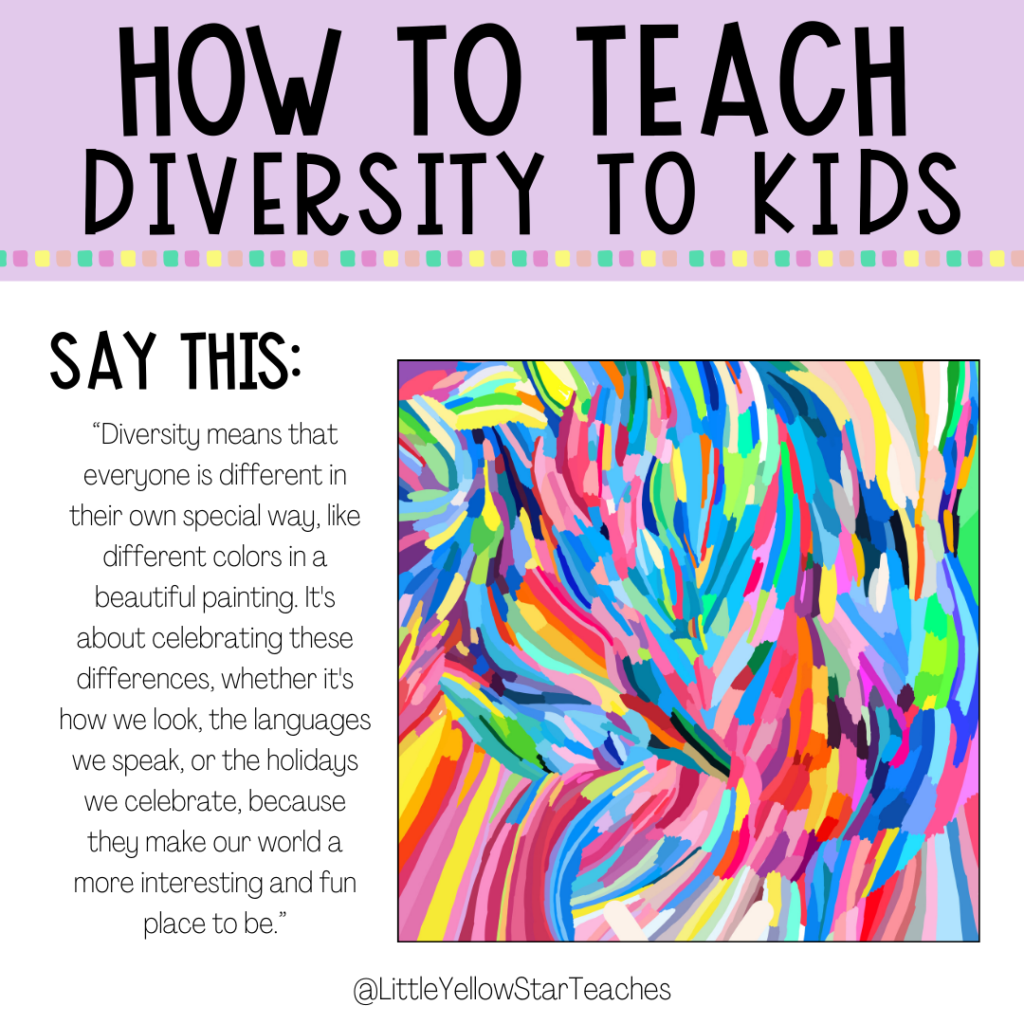
Diversity means that everyone is different in their own special way, like different colors in a beautiful painting. It’s about celebrating these differences, whether it’s how we look, the languages we speak, or the holidays we celebrate, because they make our world a more interesting and fun place to be.
Read This:
“The Gnomes and Their Hats” by Prima Jenkins
In this heartwarming tale, a community of gnomes lives deep within a lush, green forest, where each gnome wears a unique hat that reflects different aspects of themselves in the village. At times, these distinct hats create divisions, making the gnomes feel isolated from one another. But when a powerful storm sweeps through, blowing their beloved hats away, the gnomes must come together to search for them. In their shared journey, they come to realize that what truly unites them isn’t the hats they wear, but the kind hearts and unique traits they possess. By embracing each other’s differences, the gnomes learn to celebrate diversity rather than fear it—finding common ground in their shared experience of being authentically themselves.
This story was inspired by my own experiences as a teacher. In my classroom, I often saw students hesitant to engage with peers who seemed different from them. Teaching at a public school close to downtown Houston, where our students came from various backgrounds—not just racially, but economically and socially—I noticed how easily they gravitated toward those who felt familiar. It took intentional community-building activities to break the ice and help them see that, at their core, they shared more similarities than differences. This book is my way of bringing those lessons to life, helping children understand that diversity is something to be celebrated, not feared.
Do This:
Create Your Own Gnome Hat
- Objective: To help kids express their individuality and appreciate diversity through a fun, creative project.
- Materials Needed: Paper, markers or crayons, stickers, fabric scraps, glue, and other craft materials.
- Activity Description: Invite each child to create their own unique gnome hat that represents something special about them. Encourage them to think about their favorite colors, hobbies, interests, or anything that makes them who they are. Once everyone has designed their hat, have a “Hat Parade” where each child shares the story behind their creation. Then assemble them into a wreath or display in the classroom.
Afterward, discuss how each hat is different and special, just like each person. This activity will help kids understand that, just like the gnomes, our differences are something to celebrate and appreciate, making our community a more colorful and interesting place.
Check out this Gnome’s Hat Wreath Resource.
More Ways For Kids To Embrace Diversity
There are many fun and meaningful ways to embrace and celebrate diversity:
- Ask Questions:
If you’re curious about a friend’s language, holiday, or culture, ask them about it! Most people are happy to share what makes them unique. Just remember to be respectful and listen carefully. - Celebrate Differences:
Join in the fun of learning about different cultures. Try new foods, attend cultural festivals, or learn a dance from another country. Celebrating differences makes life more colorful and fun! - Be Inclusive:
When playing games or forming groups, make sure everyone feels welcome. Invite someone new to join in or sit with someone who looks like they could use a friend. - Read Books About Diversity:
Books are a great way to learn about other people’s experiences and cultures. Some great books about diversity include “Last Stop on Market Street” by Matt de la Peña, “All Are Welcome” by Alexandra Penfold, and “The Day You Begin” by Jacqueline Woodson. These stories teach us about different lives and encourage us to celebrate our differences.
Celebrate Diversity Every Day!
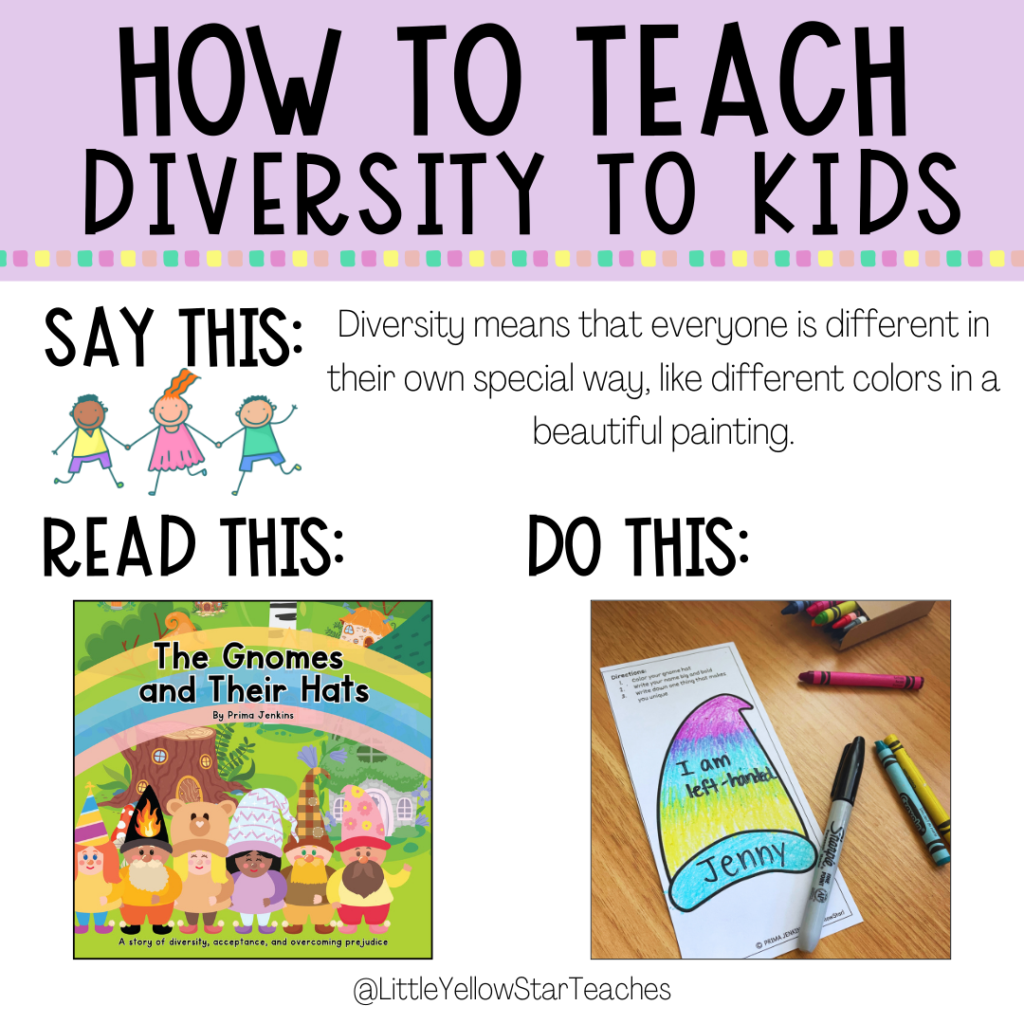
Diversity makes our world more interesting, exciting, and beautiful. It’s all around us—in our schools, our neighborhoods, and the stories we read. Teaching diversity to kids is easy! By learning about and celebrating diversity, kids can build a better, more inclusive world where everyone feels valued and respected. So next time you see someone who is different from you, remember: those differences are what make our world an amazing place!
Bye for now,
Prima from LittleYellowStar
* * *

